Delve into Fun Facts about Hoover Dam, an enduring symbol of human ingenuity. Constructed during the Great Depression, it stands resilient, showcasing innovation amid colossal challenges. Since the early 20th century, the dam has played a pivotal role in shaping the landscape of the region.

Constructed on the mighty Colorado River, Hoover Dam began its monumental journey in 1931. As an engineering marvel, it harnessed the river’s power, creating Lake Mead, one of the largest reservoirs in the United States. This colossal structure not only quenches the thirst of arid landscapes but also generates hydroelectric power, contributing significantly to the nation’s energy grid.
Venture deeper into the narrative, and you’ll uncover the human stories behind this architectural masterpiece. Enduring financial constraints and laborious conditions, the workers etched their mark on the canyon walls. A living testament to their dedication, Hoover Dam stands tall, symbolizing the triumph of collective determination over adversity. Explore the intricate details of its construction, and you’ll unravel a captivating tapestry of history and engineering prowess.
Also Read this: Fun Facts About Biscayne National Park
Quick Fun Facts about Hoover Dam
- Great Depression Marvel: Hoover Dam’s construction amid economic turmoil showcases human resilience and innovation.
- River Powerhouse: Completed in 1935, it stands tall as a testament to overcoming colossal challenges by harnessing the mighty Colorado River.
- Lake Mead Oasis: The dam’s creation formed Lake Mead, a vast reservoir crucial for providing water to arid regions in the United States.
- Hydroelectric Hub: Beyond water management, Hoover Dam is a powerhouse, generating hydroelectric energy for the nation’s power grid.
- Worker’s Legacy: Despite financial constraints and harsh conditions, the workers’ dedication left an indelible mark on the canyon walls.
- Engineering Tapestry: Explore the intricate details and captivating stories behind Hoover Dam, revealing a rich tapestry of history and engineering prowess.
The Marvelous Hoover Dam
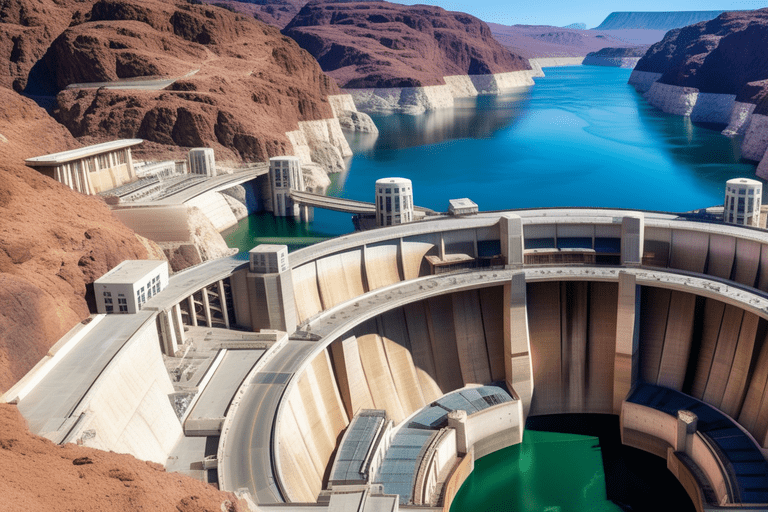
The Hoover Dam stands as an awe-inspiring testament to human engineering prowess, a colossal structure that has captured the imagination of generations. This article delves into the intricacies of this iconic marvel, unveiling 20 intriguing insights and interesting tidbits that make the Hoover Dam a true wonder of the modern world.
A Concrete Marvel

The Hoover Dam is a colossal concrete arch-gravity dam, towering at 726 feet. It was constructed during the Great Depression, providing employment to thousands and symbolizing hope in a challenging era.
Harnessing the Mighty Colorado River
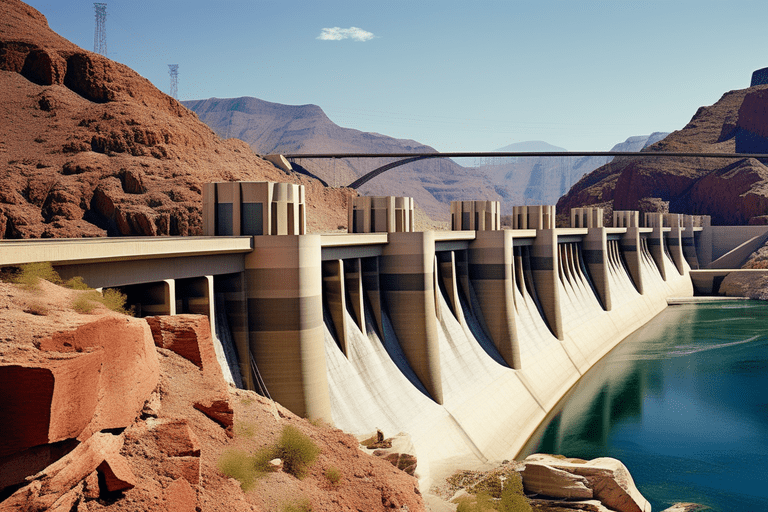
Stretching across the Colorado River, the dam was designed to control flooding, generate hydroelectric power, and provide water for irrigation. Its construction commenced in 1931 and was completed in 1936, a testament to the resilience of human determination.
Lake Mead
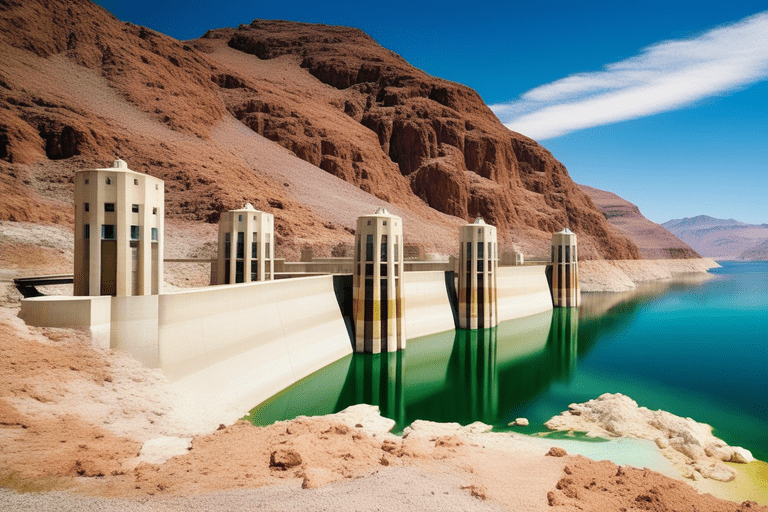
Lake Mead, created by the Hoover Dam, is one of the largest reservoirs in the United States. Spanning 112 miles, it offers recreational activities, wildlife habitat, and sustenance for nearby communities.
Powering the Southwest
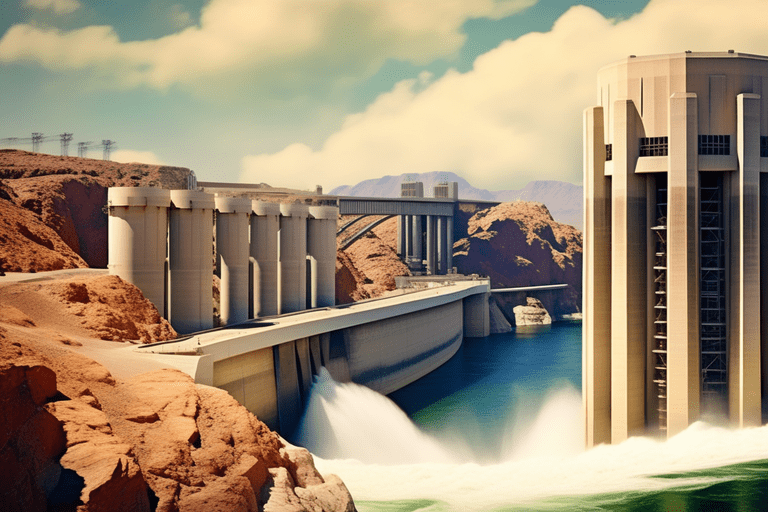
The dam generates over 4 billion kilowatt-hours of electricity annually, supplying power to Nevada, Arizona, and California. Its hydroelectric capabilities have been a crucial source of energy for decades.
Art Deco Design

Designed in the Art Deco style, the dam is not only a feat of engineering but also a visual marvel. Its terrazzo floors, bronze railings, and intricate details showcase a blend of functionality and aesthetic brilliance.
Intertwined Art and Function
The dam houses several sculptures and artworks that celebrate the spirit of the American people. The Winged Figures of the Republic, for instance, symbolize the power that has tamed the wild Colorado River.
A Bridge to the Future
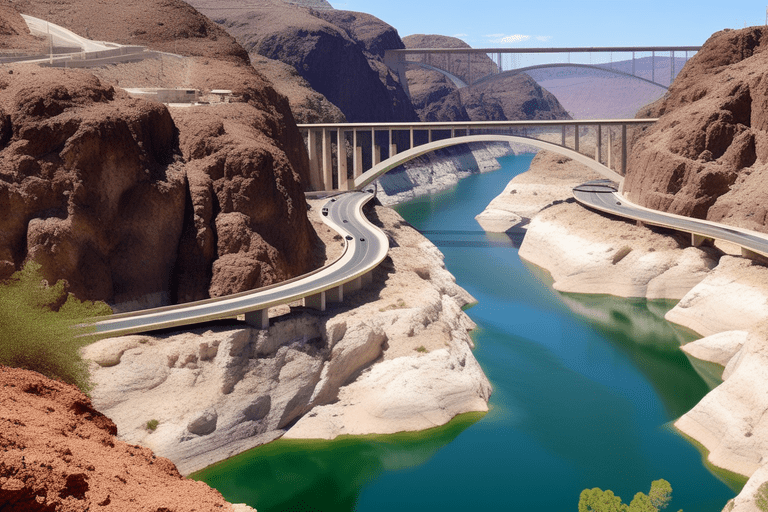
The Mike O’Callaghan–Pat Tillman Memorial Bridge, spanning the Colorado River just downstream from the dam, offers stunning views of the Hoover Dam and enhances transportation efficiency in the region.
A Cooling System Innovation
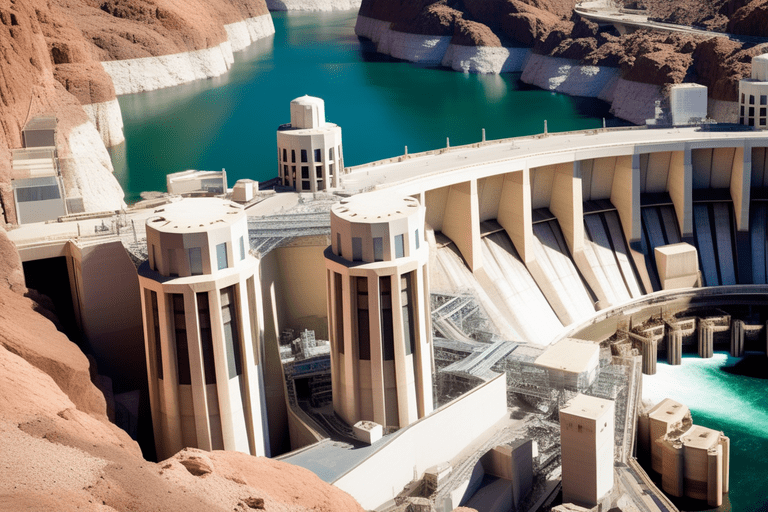
To combat the extreme heat generated by its generators, the Hoover Dam employs a unique cooling system. Pipes embedded in the concrete circulate cold river water, preventing the concrete from cracking due to the intense heat.
A Critical Role During World War II
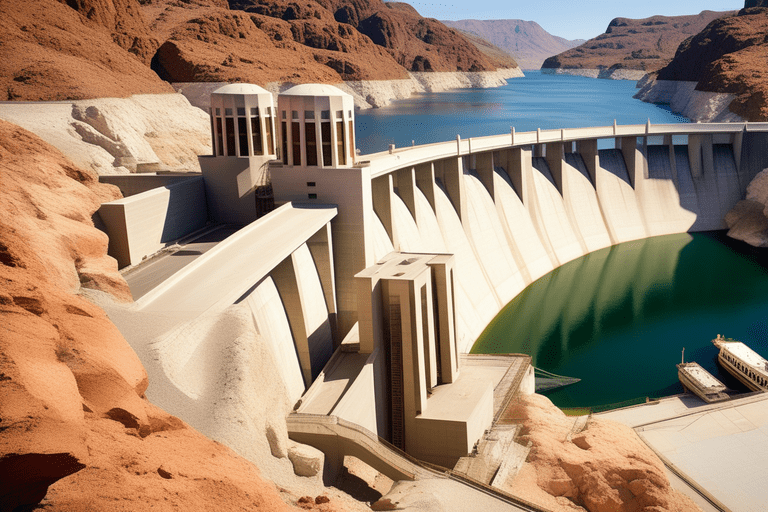
The dam played a vital role during World War II by providing electricity for the manufacturing of planes and munitions. Its contribution to the war effort highlighted its significance beyond its initial purposes.
A Challenging Construction
Over 21,000 workers toiled in challenging conditions during the dam’s construction. The extreme heat and hazardous working conditions resulted in the loss of over 100 lives, a poignant reminder of the sacrifices made for this monumental structure.
The Dam’s Name Origins
Originally known as the Boulder Dam, it was later renamed the Hoover Dam in honor of President Herbert Hoover, who played a pivotal role in the dam’s early development.
Concrete Composition
The dam contains enough concrete to build a two-lane highway from San Francisco to New York City. Its construction required the use of approximately 3.25 million cubic yards of concrete.
Expansion Plans: Hoover Dam Bypass
Recognizing the need for modernization, the Hoover Dam Bypass, or the Mike O’Callaghan–Pat Tillman Memorial Bridge, was constructed to divert traffic from the dam itself, ensuring safety and efficiency.
Gravity and Arch: A Dynamic Duo
The dam’s arch-gravity design allows it to withstand the colossal weight of the water behind it while utilizing the arch’s curve to distribute the immense forces generated.
Water Conservation Efforts
In response to ongoing droughts and water scarcity concerns, efforts have been made to optimize water usage and manage the Colorado River’s resources more sustainably.
A Hollywood Star
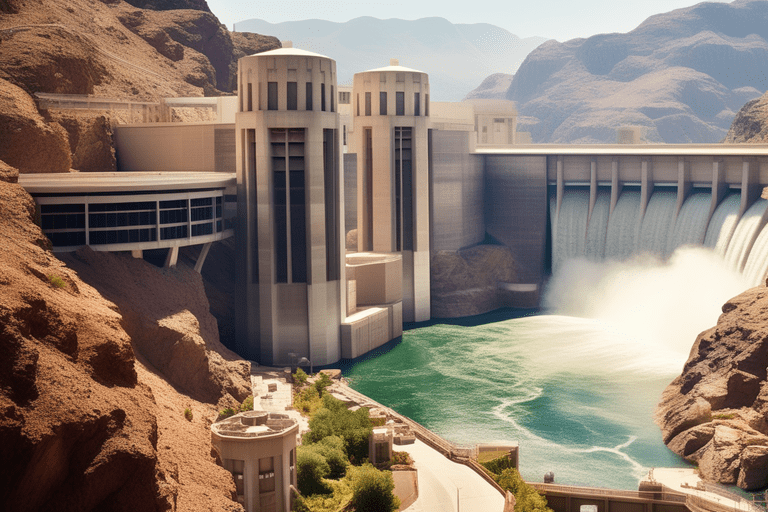
The Hoover Dam has been featured in various films, including the iconic scene in “Superman: The Movie” where the superhero flies alongside the dam. Its imposing presence has made it a cinematic symbol of power and strength.
The Dam’s Role in Agriculture
Beyond electricity and water supply, the Hoover Dam provides crucial irrigation water for over one million acres of farmland in the region, contributing significantly to agricultural productivity.
Bat Colony Conservation
The dam is home to a large colony of Mexican free-tailed bats. Efforts are made to preserve and protect these creatures, as they play a vital role in controlling insect populations in the area.
A National Historic Landmark
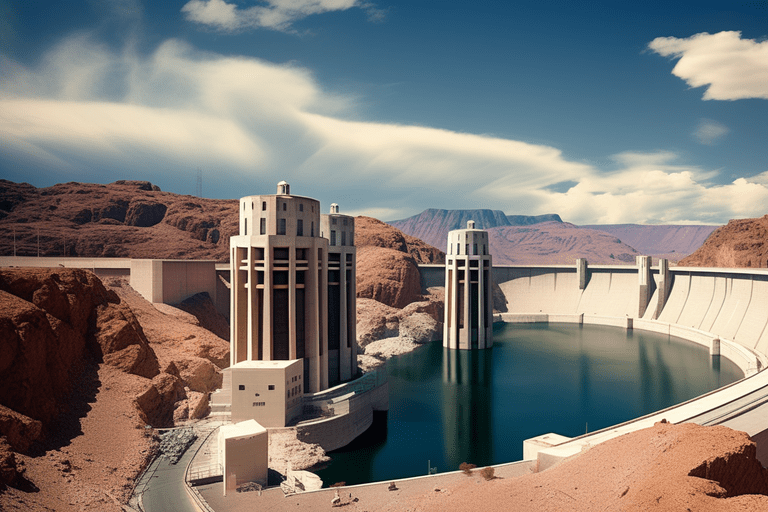
Recognizing its historical and engineering significance, the Hoover Dam was designated a National Historic Landmark in 1985, preserving its legacy for future generations.
A Symbol of American Resilience
As an enduring symbol of American resilience and ingenuity, the Hoover Dam continues to inspire awe and admiration. Its legacy, etched in concrete and history, stands as a testament to human determination and the ability to overcome monumental challenges.
FAQs
A: Hoover Dam was completed in 1935. It is considered a marvel due to its construction during the Great Depression, showcasing human resilience and innovation.
A: Hoover Dam plays a crucial role in water management by harnessing the Colorado River. It created Lake Mead, one of the largest reservoirs in the United States, serving as a vital water source for arid regions.
A: Hoover Dam contributes to the nation’s energy grid as a hydroelectric hub. Its primary function is to generate sustainable hydroelectric energy, supplying power to homes and industries across the United States.
A: Workers faced financial constraints and harsh conditions during construction. Despite these challenges, their dedication left an enduring legacy, visible in the canyon walls and the dam’s overall construction.
A: Hoover Dam provides recreational opportunities, with Lake Mead serving as a vast reservoir. The lake attracts visitors for activities such as boating and fishing, turning the area into a recreational oasis.